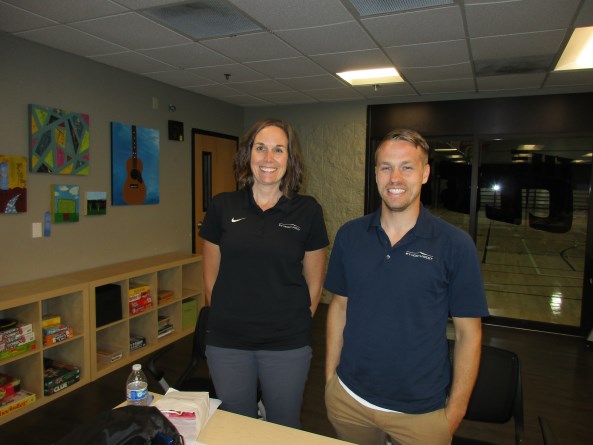
“Ergonomics in the Dental Workplace”
with PT Northwest’s Lisa Gilbertson MSPT, OCS, GCS & Nic Siewert PT, DPT, OCS
October 2017
Review by Jennifer Frankel, DMD,
The Newsletter of the Marion & Pok Dental Society
The year started off at the Boys and Girls Club. Jodi Loper, the Health Services Director, opened the evening by introducing her team and showing us a video of how the club impacts our youth. If you are interested in volunteering at the Boys and Girls Club dental clinic, please give Jodi a call to set up a time. They are always looking for volunteers.
This month’s presentation was all about you and your posture. As you are sitting at your computer reading this article or hunched over a patient doing a procedure, think about how you are sitting. Lisa Gilbertson and Nic Siewert from PT Northwest are physical therapists who gave us some tips on how to take care of ourselves while working so that we can continue to work pain free.
They focused on ergonomics and how we as providers should position ourselves and our patients. They also wanted us to consider what type of equipment we use and how well we utilize our workspace. Among dental professionals, 64-93 percent report having musculoskeletal problems. These can include pain in the wrist, hand, neck, upper/lower back and shoulders. Symptoms can appear early in our careers, and prevention of ergonomic risk is not adequately taught.
Some pathologies which can arise in our profession can include carpal tunnel syndrome. Causes include repetitive gripping and resting on the wrist for prolonged periods. Symptoms include numbness, tingling and/or pain in the wrist and hand.
Another pathology is tendonitis or tensoynovi-tis of the wrist. This is inflammation of the tendon or synovial sheath surrounding the tendon which attaches the muscle to the bone. Symptoms are pain in the area especially when using the hands and wrist.
Some other pathologies discussed were Dequervain’s tenosynovitis (inflammation of the tendon sheath at the radial border of the thumb), Guyon’s Syndrome (compression of the ulnar nerve at the medial wrist), epicondylitis (inflammation at the attachment of the tendon at the elbow), ulnar nerve compression/cubital tunnel syndrome (golf/tennis elbow), rotator cuff tendonitis, bursitis (inflammation of the bursa at the top of the shoulder), muscular pain in the cervical spine and neck, degenerative changes in the spine and postural dysfunction in the thoracic spine (muscular tightness and joint hypomobility).
The key to preventing these pathologies is paying attention to how we work. What changes can you make to minimize the risk of developing a musculoskeletal injury? Some factors that contribute to work-related musculoskeletal disorders in dentistry include repetitive movements, awkward positions, diameter and serration of handles which determine how we grip them. Other ways to prevent problems include keeping instruments sharp and balanced, having a good light source, varying how long we remain in one position for extended periods of time, poor posture, stress, infrequent breaks and inappropriate selection of equipment. When selecting equipment Nic and Lisa suggested looking at the weight of instruments along with their instrument use and using light weight cords of adequate length.
Making sure instruments are kept close to the provider so the provider doesn’t have to swivel or rotate can help maintain a neutral working posture. Some joints require a neutral position while others need a 90 degree position. Neutral regions include the spine, wrist, forearms and fingers. Joints in the 90 degree region include knees, hips and elbows. I know we all struggle with our posture but we need to be aware of how our bodies are positioned while working. We also have to put the patient in the proper position as well. They should be as close to the provider as possible and at 10-15 degrees above the floor. This is not always possible because we know that there are those patients that can’t lay down all the way and need pillows to support their necks which make it harder for us to see.
Lisa and Nic ended the evening by going over some stretches we can do at home and in the office to help prevent musculoskeletal disorders. Just remember, when you first experience pain, that is the time to seek help. Don’t wait.
